theartsdesk at the Sheffield Chamber Music Festival - romps and meditations at the highest level | reviews, news & interviews
theartsdesk at the Sheffield Chamber Music Festival - romps and meditations at the highest level
theartsdesk at the Sheffield Chamber Music Festival - romps and meditations at the highest level
Pianist Kathryn Stott curates a meeting of Yorkshire's top team with special guests
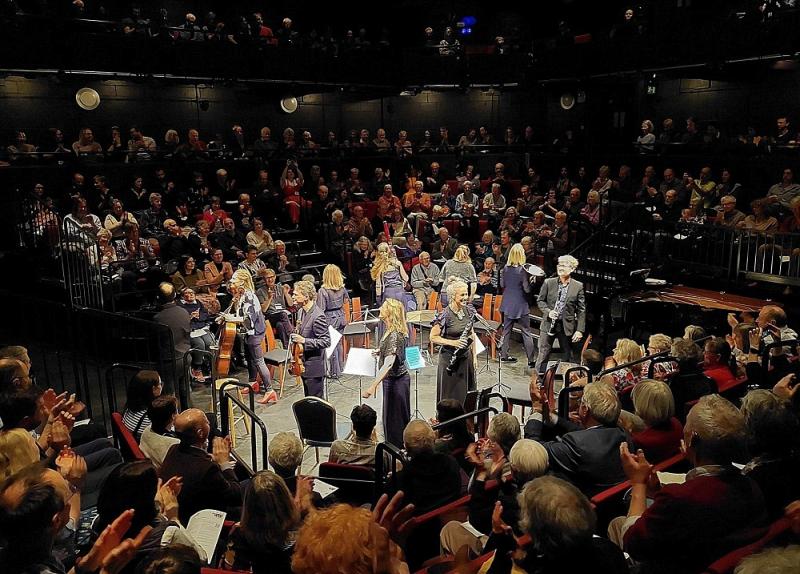
Any chamber music festival that kicks off with Czech genius Martinů's Parisian jeu d'esprit ballet-sextet La revue de cuisine and ends its first concert with Saint-Saëns's glory of a Septet for trumpet, piano and strings is likely to be a winner.
This one was. It transpires that this year's curator Kathryn Stott – Steven Isserlis will follow in 2024 – is not only a remarkable pianist but also an inspired programmer, bringing to the 10 players of Ensemble 360, core of the fabulously enterprising Music in the Round, an unfamiliar repertoire and special guests with whom they made sparks fly.
I only caught the first of the guests, apart from Stott herself as pianist: Tine Thing Helseth, who can make the trumpet sing like no-one else I’ve heard. Her real moment in the sun during that first concert was in transcriptions of three Weill songs; the “Tango Habanera” “Youkali” was sheer cool perfection (it was originally written as an instrumental interlude, so to give it to trumpet and piano makes good sense). She’s still coming back to full strength after a long illness, so there were no extended fireworks, not even in the Martinů and Saint-Saëns where the trumpet is very much part of the ensemble.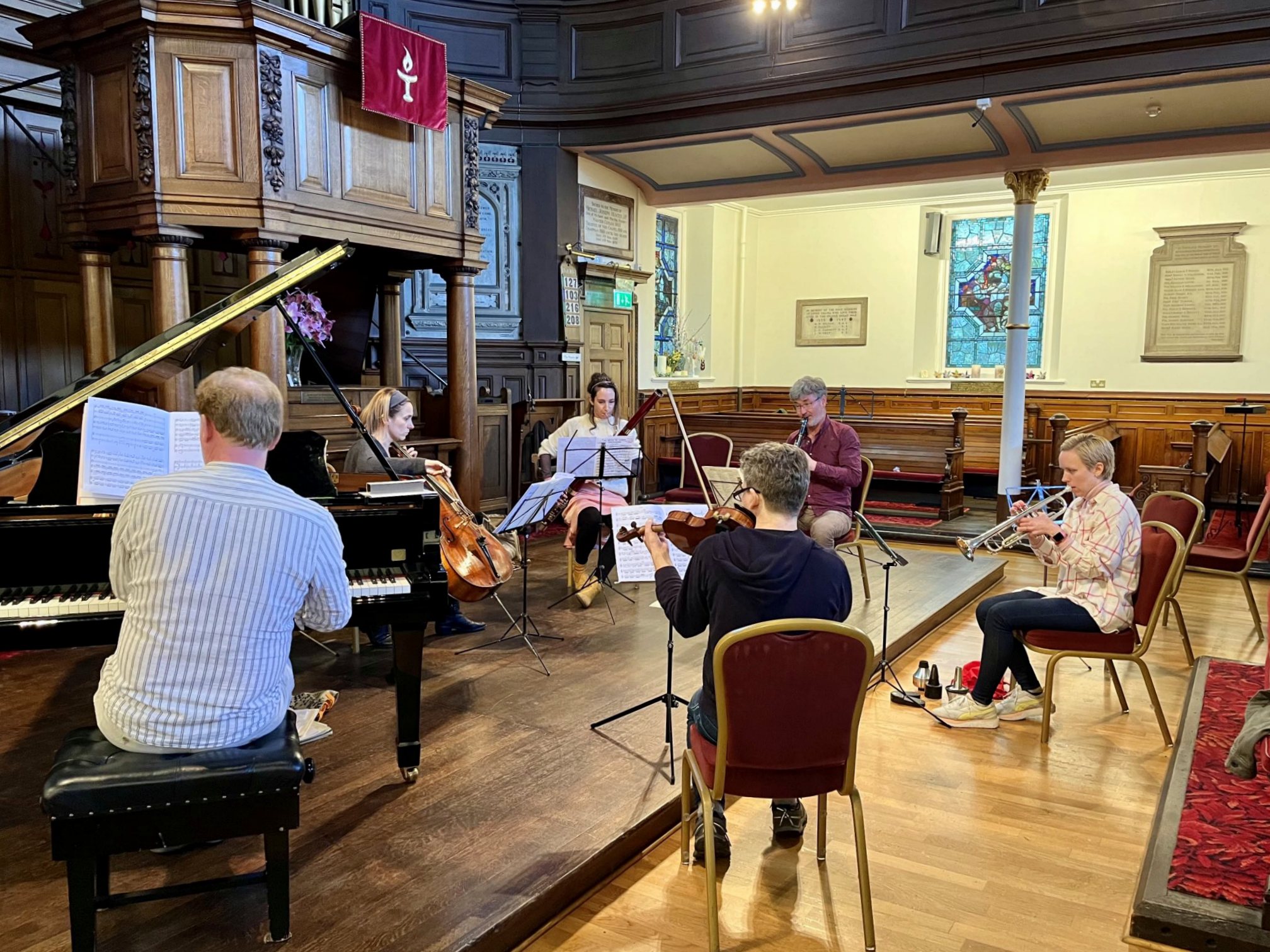 Here our pianists shone, thanks to the fascination of their roles. Tim Horton, Ensemble 360 member and another of those underrated artists as good as most you find in the spotlight, set us up for the waywardness of Martinů’s tale about a saucepan in love with its lid, even coming on with (aptly) a Le Creuset ensemble to tell us a bit about the plot before establishing a very precise touch and a stomach-flip-inducing descent which marks out the Moravian master’s total originality (the players in rehearsal pictured above). And Stott effortlessly despatched the virtuoso flourishes which Saint-Saëns, experienced in five concertos for the instrument and no mean pianist himself, lets fly from the ensemble. Both these little masterpieces are proof that with an individual sense of melody and true musical fun the lighter end of the musical scale has claim to our full attention. Stott and Horton also lilted with perfectly consonant rubato at one piano in two of Dvořák’s Slavonic Dances.
Here our pianists shone, thanks to the fascination of their roles. Tim Horton, Ensemble 360 member and another of those underrated artists as good as most you find in the spotlight, set us up for the waywardness of Martinů’s tale about a saucepan in love with its lid, even coming on with (aptly) a Le Creuset ensemble to tell us a bit about the plot before establishing a very precise touch and a stomach-flip-inducing descent which marks out the Moravian master’s total originality (the players in rehearsal pictured above). And Stott effortlessly despatched the virtuoso flourishes which Saint-Saëns, experienced in five concertos for the instrument and no mean pianist himself, lets fly from the ensemble. Both these little masterpieces are proof that with an individual sense of melody and true musical fun the lighter end of the musical scale has claim to our full attention. Stott and Horton also lilted with perfectly consonant rubato at one piano in two of Dvořák’s Slavonic Dances.
It's healthy to be able to say I’d never heard any of the six works on the opening programme live, not in the forms given, at any rate: another real winner was Falla’s sextet version, related to El amor brujo in its original chamber version as a “gitaneria” or danced Roma entertainment, of the meltingly lovely Pantomime and the deservedly famous Ritual Fire Dance. I’d just been reading how Poulenc placed Falla – also deservedly, I think – among the more obviously great names of his time; of the younger French generation of composers, he cited Messiaen and Jean Françaix. The latter hasn’t stood the test of time so well, and his Dixtuor for string and wind quintets is most original in its quirky humour, but it was so good to see each of the Ensemble 360 players shining there. 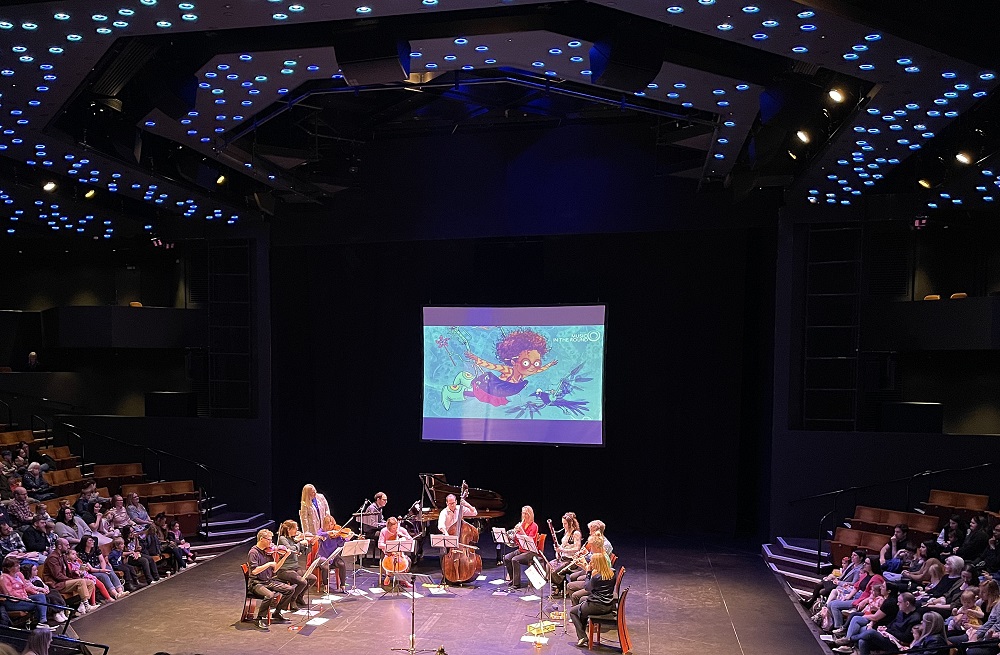 Not surprisingly, a packed house in the smallest of the three Crucible theatres, the Tanya Moiseiwitsch Playhouse, went crazy. I suggested to various folk at the generous reception afterwards (all attendees welcome for a glass of wine) that 45 minutes’ worth of it would play well to children, and some of it must have turned up in the morning event of the last Saturday, “Music for Curious Young Minds”. I felt I had to catch a festival fixture on the first Saturday morning, the 10 players marshalled with huge energy and total lack of fake jollity or condescension by Polly Ives in the main Crucible Theatre – oh, that rainbow lighting! – for Paul Rissmann’s original, beautifully crafted score accompanying Izzy Gizmo, best-selling children’s book by Pip Jones and Sara Ogilvie (pictured above). The kids in my row were well schooled in all the instruments and sang/responded with gusto. They even got the finale of Saint-Saens’ Carnival of the Animals, sans xylophone, as a mood-setter before Ives tackled the spreschstimme narrative of the girl inventor's vicissitudes. Pure delight: if you’re in the Aldeburgh area this summer and have any 3-7 year olds (and perhaps even if you don’t and want to feel jolly), get along to Snape Maltings on 20 August.
Not surprisingly, a packed house in the smallest of the three Crucible theatres, the Tanya Moiseiwitsch Playhouse, went crazy. I suggested to various folk at the generous reception afterwards (all attendees welcome for a glass of wine) that 45 minutes’ worth of it would play well to children, and some of it must have turned up in the morning event of the last Saturday, “Music for Curious Young Minds”. I felt I had to catch a festival fixture on the first Saturday morning, the 10 players marshalled with huge energy and total lack of fake jollity or condescension by Polly Ives in the main Crucible Theatre – oh, that rainbow lighting! – for Paul Rissmann’s original, beautifully crafted score accompanying Izzy Gizmo, best-selling children’s book by Pip Jones and Sara Ogilvie (pictured above). The kids in my row were well schooled in all the instruments and sang/responded with gusto. They even got the finale of Saint-Saens’ Carnival of the Animals, sans xylophone, as a mood-setter before Ives tackled the spreschstimme narrative of the girl inventor's vicissitudes. Pure delight: if you’re in the Aldeburgh area this summer and have any 3-7 year olds (and perhaps even if you don’t and want to feel jolly), get along to Snape Maltings on 20 August.
Saturday evening’s concert steered us from more high spirits to night and mortality. Who knew that the great Romanian pianist Dinu Lipatti, who died far too young at the age of 33, was not only a composer in his own right but also arranged six of Domenico Scarlatti’s quirky short sonatas for wind quintet? This gave us such a good opportunity to hear the true individuality of flautist (and LPO principal) Juliet Bausor, oboist Rachel Clegg, clarinettist Robert Plane, bassoonist Emily Hultmark and horn-player Naomi Atherton. Tine Thing Helseth sang her farewell to the festival with pure bel canto in five Puccini songs (who knew, too, that “Sole e amore” is the source of the Act 3 Quartet in La bohème?).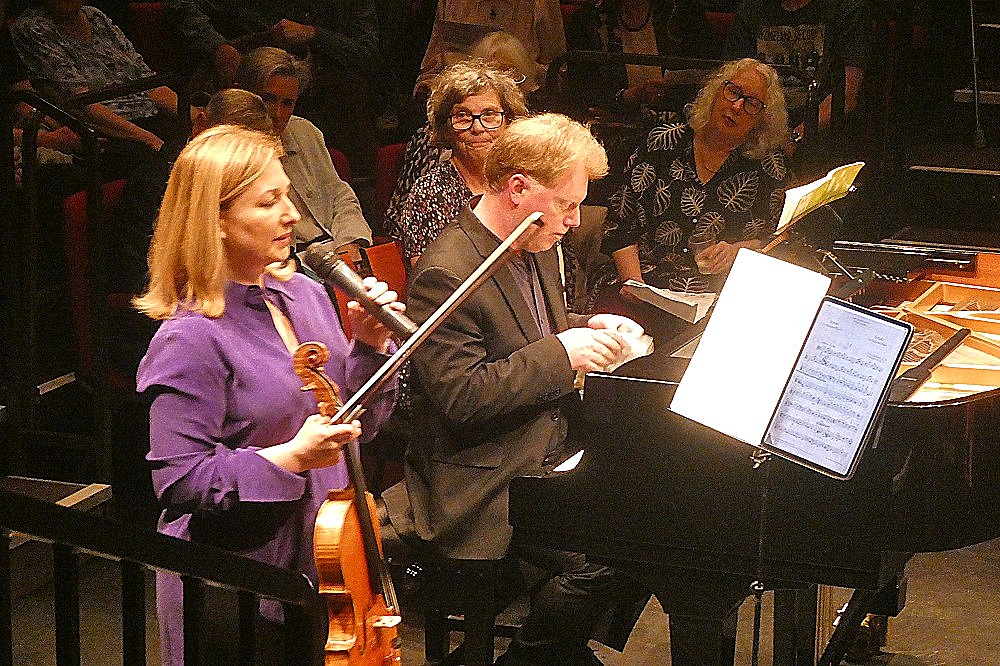
The valley of the shadow of death continued on Sunday evening in the octagonal round of St Martin’s Church, Stoney Middleton – in an actual valley in the Peak District – with an even more consistently elegiac programme. Again, three cheers to Stott (pictured below introducing the concert), this time for introducing the players to Sibelius’s Voces Intimae Quartet. Why does this great masterpiece not get programmed more often? Its central Adagio, flanked by two scherzo-like movements, is surely up there with those in the late Beethoven quartets, and it comes from somewhere deep; a throat tumour had been removed in 1908, the year before the work’s composition, so no wonder Sibelius wrote to his wife how it was “the kind of thing that brings a smile to your lips at the hour of death”. 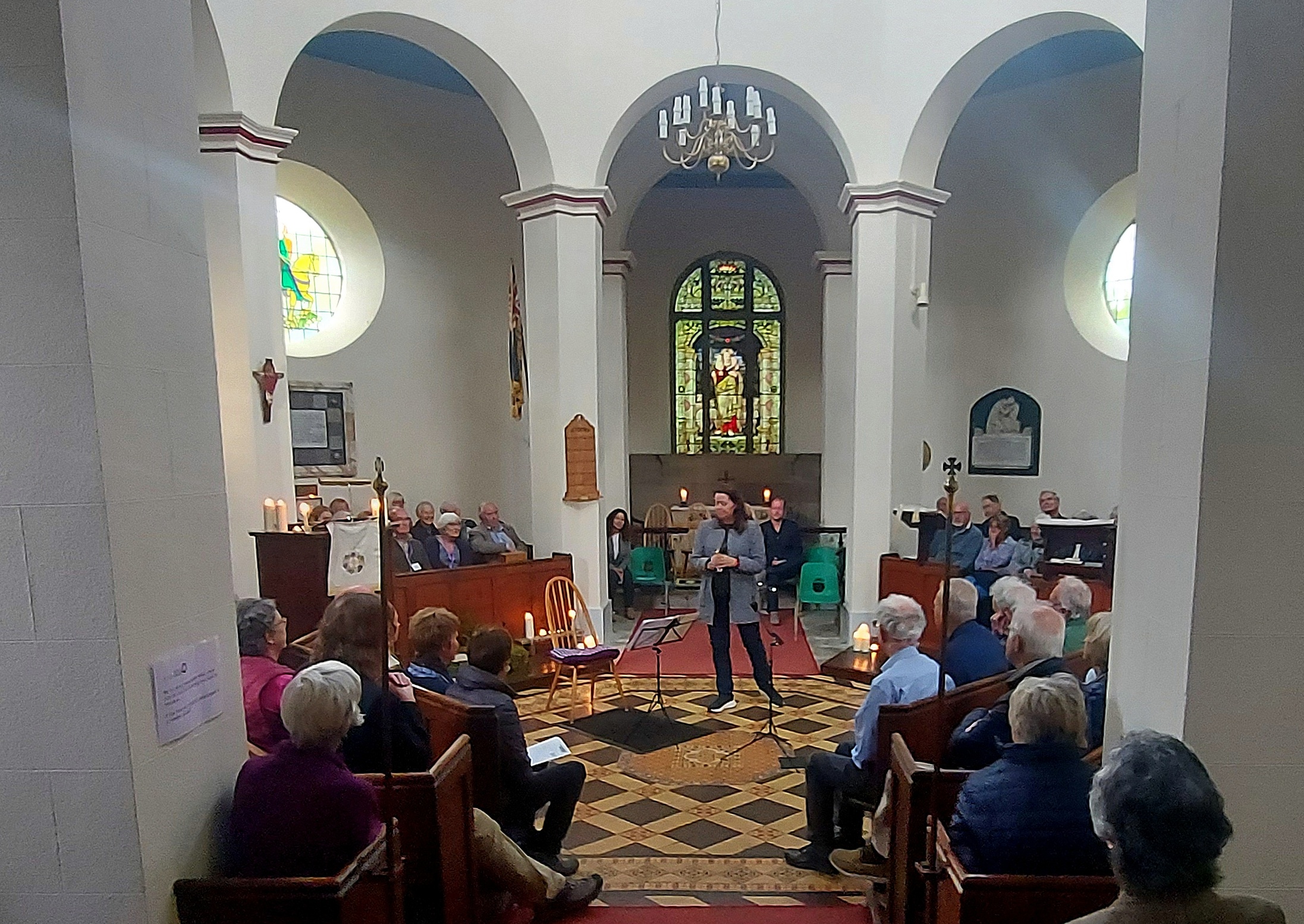 The passionate advocacy of Ensemble 360’s four players was boundless – I’ll make sure not to hear the work from anyone else for some time – and all the more remarkable since, in the company of fellow violinist Claudia Ajmone-Marsan, Roberts and cellist Gemma Rosefiled, the most cultured of artists, Canadian Corey Cerovsek, had stepped in for Ensemble 360’s regular Benjamin Nabarro ten days earlier.
The passionate advocacy of Ensemble 360’s four players was boundless – I’ll make sure not to hear the work from anyone else for some time – and all the more remarkable since, in the company of fellow violinist Claudia Ajmone-Marsan, Roberts and cellist Gemma Rosefiled, the most cultured of artists, Canadian Corey Cerovsek, had stepped in for Ensemble 360’s regular Benjamin Nabarro ten days earlier.
Equally profound were the extreme sounds produced by Rosefield and double-bass player Philip Nelson in Schnittke’s Hymnus II, another masterpiece by another composer who lived under the shadow of death, and the racy but impassioned pace of the outer movements in Schubert’s “Death and the Maiden” Quartet, where the supreme sophistication of these players shed extra lights throughout the variations on the song of that name. (Pictured below: the string players at a later concert, by Andy Brown).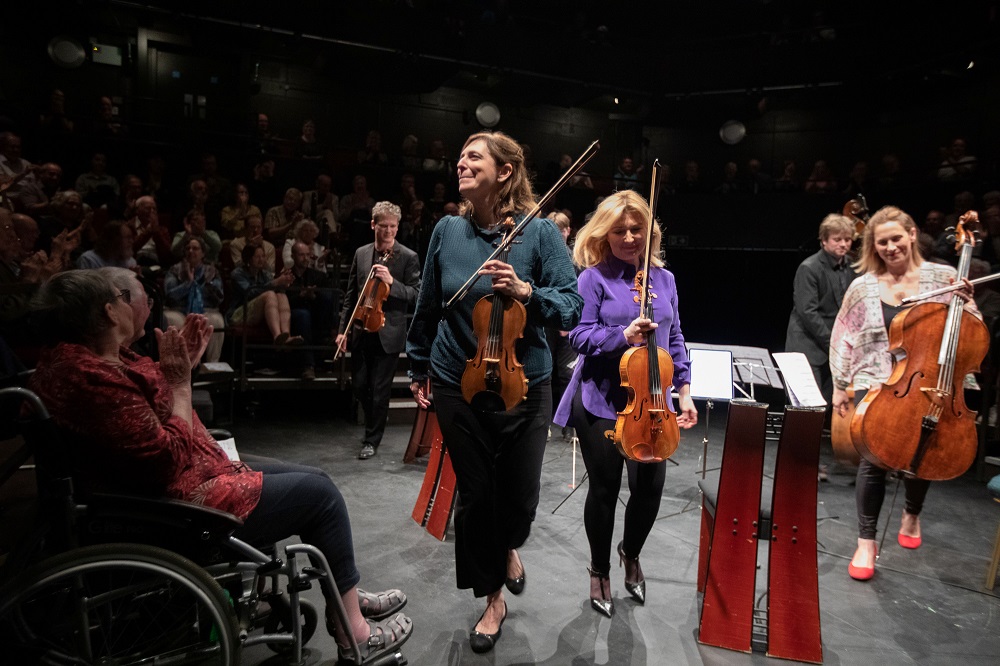 Tantalisingly, Ensemble 360 were in rehearsal with another of Stott’s special guests, bandoneonist and composer JP Jofre, while two of us were ascending from Hathersage to Stanage Edge in the Peak District earlier that Sunday (I've fallen in love with the area, and with Sheffield, too), and it was frustrating to hear Graham Fitkin, whose music Stott regularly espouses, talk so compellingly about his music’s relationship to ecological issues in a Saturday afternoon discussion about the climate crisis without being able to hear his Recur in a concert celebrating his 60th birthday with the players including his partner, harpist Ruth Wall.
Tantalisingly, Ensemble 360 were in rehearsal with another of Stott’s special guests, bandoneonist and composer JP Jofre, while two of us were ascending from Hathersage to Stanage Edge in the Peak District earlier that Sunday (I've fallen in love with the area, and with Sheffield, too), and it was frustrating to hear Graham Fitkin, whose music Stott regularly espouses, talk so compellingly about his music’s relationship to ecological issues in a Saturday afternoon discussion about the climate crisis without being able to hear his Recur in a concert celebrating his 60th birthday with the players including his partner, harpist Ruth Wall.
I also want to hear the Moravian folk-inspired music of violinist-composer Pavel Fischer, appearing that Thursday, and what an amazing marathon it must have been for Stott and Horton in a Friday night concert covering both Rachmaninov’s two-piano suites and Symphonic Dances. It seems fair to leave the last word to Ensemble 360 in a tweet: “Kathryn Stott has been the dream curator, as programmer, pianist and simply gorgeous person to hang out with. We’ve had a ball!”
rating
Explore topics
Share this article
The future of Arts Journalism
You can stop theartsdesk.com closing!
We urgently need financing to survive. Our fundraising drive has thus far raised £49,000 but we need to reach £100,000 or we will be forced to close. Please contribute here: https://gofund.me/c3f6033d
And if you can forward this information to anyone who might assist, we’d be grateful.

Subscribe to theartsdesk.com
Thank you for continuing to read our work on theartsdesk.com. For unlimited access to every article in its entirety, including our archive of more than 15,000 pieces, we're asking for £5 per month or £40 per year. We feel it's a very good deal, and hope you do too.
To take a subscription now simply click here.
And if you're looking for that extra gift for a friend or family member, why not treat them to a theartsdesk.com gift subscription?
more Classical music
 From Historical to Hip-Hop, Classically Black Music Festival, Kings Place review - a cluster of impressive stars for the future
From quasi-Mozartian elegance to the gritty humour of a kitchen inspection
From Historical to Hip-Hop, Classically Black Music Festival, Kings Place review - a cluster of impressive stars for the future
From quasi-Mozartian elegance to the gritty humour of a kitchen inspection
 Shibe, LSO, Adès, Barbican review - gaudy and glorious new music alongside serene Sibelius
Adès’s passion makes persuasive case for the music he loves, both new and old
Shibe, LSO, Adès, Barbican review - gaudy and glorious new music alongside serene Sibelius
Adès’s passion makes persuasive case for the music he loves, both new and old
 Anja Mittermüller, Richard Fu, Wigmore Hall review - a glorious hall debut
The Austrian mezzo shines - at the age of 22
Anja Mittermüller, Richard Fu, Wigmore Hall review - a glorious hall debut
The Austrian mezzo shines - at the age of 22
 First Person: clarinettist Oliver Pashley on the new horizons of The Hermes Experiment's latest album
Compositions by members of this unusual quartet feature for the first time
First Person: clarinettist Oliver Pashley on the new horizons of The Hermes Experiment's latest album
Compositions by members of this unusual quartet feature for the first time
 Gesualdo Passione, Les Arts Florissants, Amala Dior Company, Barbican review - inspired collaboration excavates the music's humanity
At times it was like watching an anarchic religious procession
Gesualdo Passione, Les Arts Florissants, Amala Dior Company, Barbican review - inspired collaboration excavates the music's humanity
At times it was like watching an anarchic religious procession
 Classical CDs: Camels, concrete and cabaret
An influential American composer's 90th birthday box, plus British piano concertos and a father-and-son duo
Classical CDs: Camels, concrete and cabaret
An influential American composer's 90th birthday box, plus British piano concertos and a father-and-son duo
 Cockerham, Manchester Camerata, Sheen, Martin Harris Centre, Manchester review - re-enacting the dawn of modernism
Two UK premieres added to three miniatures from a seminal event of January 1914
Cockerham, Manchester Camerata, Sheen, Martin Harris Centre, Manchester review - re-enacting the dawn of modernism
Two UK premieres added to three miniatures from a seminal event of January 1914
 Kempf, Brno Philharmonic, Davies, Bridgewater Hall, Manchester review - European tradition meets American jazz
Bouncing Czechs enjoy their Gershwin and Brubeck alongside Janáček and Dvořák
Kempf, Brno Philharmonic, Davies, Bridgewater Hall, Manchester review - European tradition meets American jazz
Bouncing Czechs enjoy their Gershwin and Brubeck alongside Janáček and Dvořák
 Solomon, OAE, Butt, QEH review - daft Biblical whitewashing with great choruses
Even a top soprano and mezzo can’t make this Handel paean wholly convincing
Solomon, OAE, Butt, QEH review - daft Biblical whitewashing with great choruses
Even a top soprano and mezzo can’t make this Handel paean wholly convincing
 Two-Piano Gala, Kings Place review - shining constellations
London Piano Festival curators and illustrious friends entertain and enlighten
Two-Piano Gala, Kings Place review - shining constellations
London Piano Festival curators and illustrious friends entertain and enlighten
 Echo Vocal Ensemble, Latto, Union Chapel review - eclectic choral programme garlanded with dance
Beautiful singing at the heart of an imaginative and stylistically varied concert
Echo Vocal Ensemble, Latto, Union Chapel review - eclectic choral programme garlanded with dance
Beautiful singing at the heart of an imaginative and stylistically varied concert
 Scott, Irish Baroque Orchestra, Whelan, RIAM, Dublin review - towards a Mozart masterpiece
Characteristic joy and enlightenment from this team, but a valveless horn brings problems
Scott, Irish Baroque Orchestra, Whelan, RIAM, Dublin review - towards a Mozart masterpiece
Characteristic joy and enlightenment from this team, but a valveless horn brings problems

Add comment